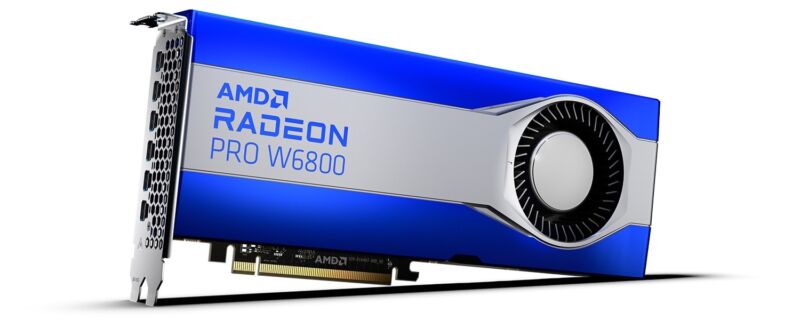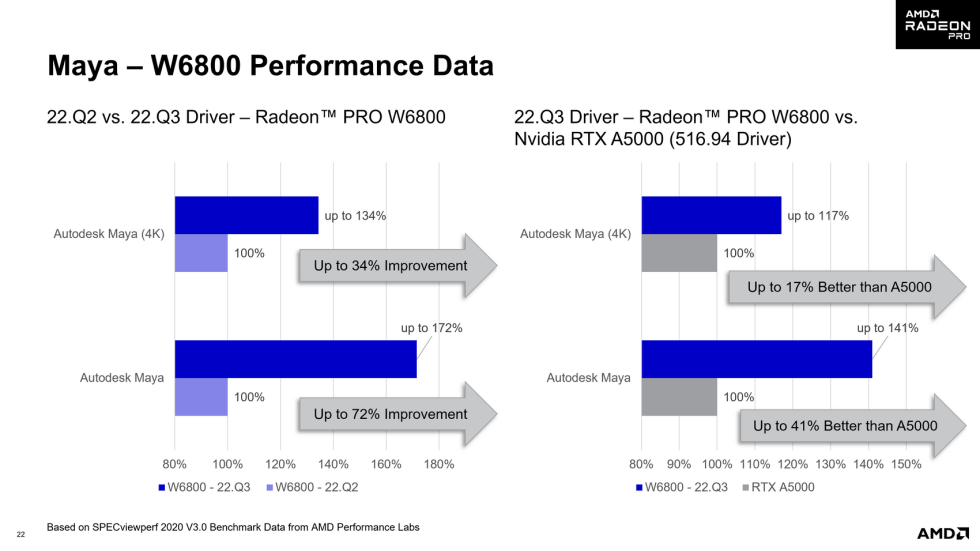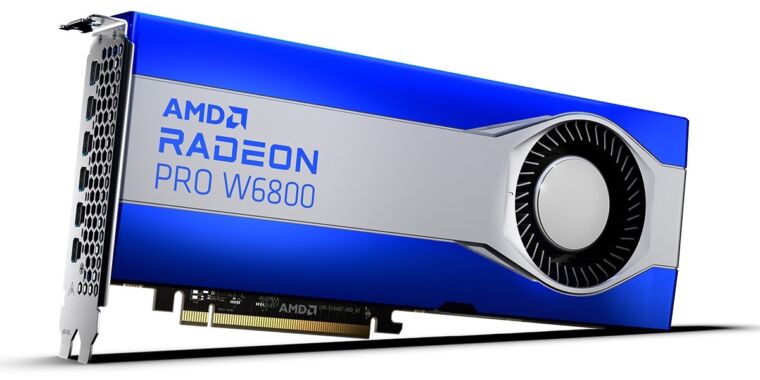
AMD
Most development effort in graphics drivers these days, whether you’re talking about Nvidia, Intel, or AMD, is focused on new APIs like DirectX 12 or Vulkan, increasingly advanced upscaling technologies, and specific improvements for new game releases. But this year, AMD has also been focusing on an old problem area for its graphics drivers: OpenGL performance.
Over the summer, AMD released a rewritten OpenGL driver that it said would boost the performance of Minecraft by up to 79 percent (independent testing also found gains in other OpenGL games and benchmarks, though not always to the same degree). Now those same optimizations are coming to AMD’s officially validated GPU drivers for its Radeon Pro-series workstation cards, providing big boosts to professional apps like Solidworks and Autodesk Maya.
“The AMD Software: PRO Edition 22.Q3 driver has been tested and approved by Dell, HP, and Lenovo for stability and is available through their driver downloads,” the company wrote in its blog post. “AMD continues to work with software developers to certify the latest drivers.”

AMD
Using a Radeon Pro W6800 workstation GPU, AMD says that its new drivers can improve Solidworks rendering speeds by up to 52 or 28 percent at 4K and 1080p resolutions, respectively. Autodesk Maya performance goes up by 34 percent at 4K or 72 percent at the default resolution. The size of the improvements varies based on the app and the GPU, but AMD’s testing shows significant, consistent improvements across the board on the Radeon Pro W6800, W6600, and W6400 GPUs, improvements that AMD says will help those GPUs outpace analogous Nvidia workstation GPUs like the RTX A5000 and A2000 and the Nvidia T600.
A full list of compatible Radeon Pro-series GPUs is available in the 22.Q3 driver’s release notes; in addition to desktop cards, the driver is compatible with the mobile GPUs in a variety of laptops from Dell, HP, Lenovo, and Panasonic. AMD didn’t show any performance numbers for Radeon Pro GPUs older than the 6000 series, though presumably, all GPUs supported by the new drivers will see at least some benefit.
The OpenGL API is old, but it’s still in relatively wide use among older games (the PC version of Minecraft being one prominent example), in professional apps, and as a rendering backend for game console emulators, among other places. AMD also rewrote its DirectX 11 drivers earlier this year, though the performance gains in most games were generally much smaller than the improvements provided by the new OpenGL drivers.








